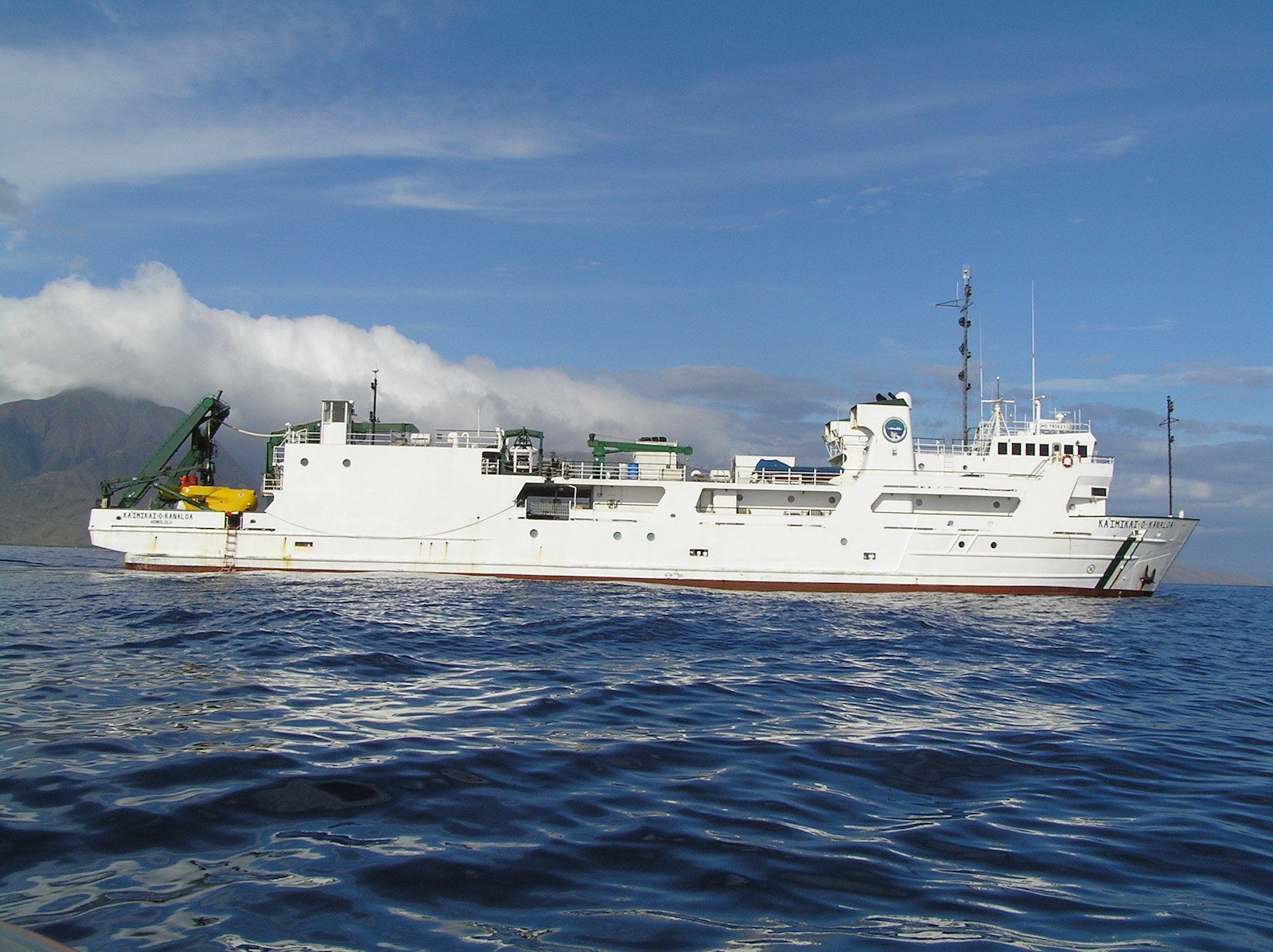URI Graduate School of Oceanography student Jiahang Li and faculty member Dr. Yang Shen are currently off the coast of the Island of Hawaii as part of a “rapid response” to the ongoing eruption of the Kilauea volcano and accompanying earthquakes and tremors. As the pair works with other researchers to deploy instruments on the ocean bottom, Jiahang will provide updates throughout the week-long cruise.
Aloha, greetings from Honolulu!
After a 12-hour flight across the U.S. continent and Pacific Ocean from Rhode Island, Professor Shen and I finally arrived in the Aloha State. In the coming seven days (July 7th to July 13th), we are going to deploy 12 ocean bottom seismometers (OBSs) on the submarine portion of the south flank of the Kilauea volcano to record seismic signals for about two months.
The Ka`imikai-O-Kanaloa (KOK) research vessel will be our home and working station for our days on the ocean. The 223-foot single-hulled vessel is owned and operated by the University of Hawaii Marine Center in Honolulu, and is already stocked with the OBSs onboard.
The latest U.S. Geological Survey Hawaiian Volcano Observatory (HVO) report showed that there are still numerous aftershocks nearly two months after the magnitude 6.9 earthquake on May 4th. The lava eruption in the lower East Rift Zone also continues with no significant change in the past few days. The seismic signals collected with the OBSs will be used to better locate the aftershocks and determine the seismic zone in the submarine area. The seismic signals can also reveal the lava-water interaction at the ocean-entry point, a hazardous area where the lava meets the ocean with occasionally explosive results. In addition to recording the seismic signals, we will also map the seafloor bathymetry using acoustic signals to capture the lava delta as it begins to be constructed and to detect possible submarine landslides. Lava deltas are patches of new land formed as lava flows into the ocean. This accumulation of lava is unstable because it is built on top of loose material that can be eroded away by surf, sometimes leading to dramatic collapses.
The weather should be warm and humid during our deployment. We’re looking forward to meeting the science parties from Rice University, Western Washington University, University of Hawaii, and of course the crew. The RV KOK is scheduled to leave Honolulu at 9:30 AM and we will arrive at the first deployment site located on the flank of Kilauea in about 24 hours. The adventure will soon start, and more stories are on their way.
Aloha, Rhode Island!


